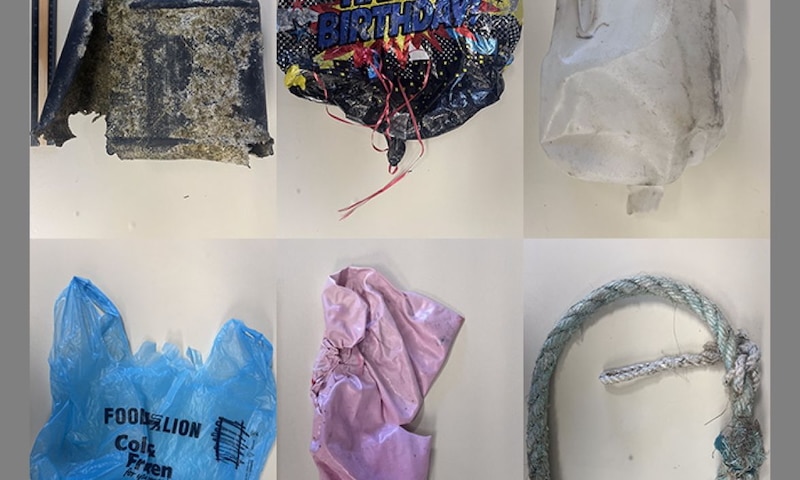This post was originally published on Eco Watch
For whales that dive deeper into the oceans for food, they face a growing threat: plastic pollution. That’s because the sounds that plastics make can be very similar to the sounds that prey make, leading to confusion for whales that rely on echolocation to source food.
According to a new study, published in the journal Marine Pollution Bulletin, visual confusion between pollution and prey is not the only way that whales are ingesting plastics.
“These acoustic signatures are similar, and this might be a reason that these animals are driven to consume plastic instead of, or in addition to, their prey,” Greg Merrill, lead author of the study and a graduate student at Duke University, said in a statement.
Some whales, such as sperm whales, pygmy sperm whales and goose-beaked whales, use echolocation to detect food sources deeper into the ocean. They dive deep into the water, then send clicks, creaks and buzzes, the sounds of which will bounce off from objects up to a few hundred meters away and reverberate back to the whales. Whales use fatty sensory mechanisms in their jaw to feel the reverberations, which are then sent to their ears and brains to detect the prey — or, as researchers have determined, plastics — nearby.
More and more research is uncovering plastic waste in the stomachs of deep-diving whales, so the researchers set out to find out why whales were mistaking plastic for food if they couldn’t see the plastics, which are often visually mistaken for food by marine life.
Samples of plastic beach trash collected in Beaufort and Atlantic Beach, North Carolina and then subjected to underwater acoustic testing. Greg Merrill, Duke Marine Lab
The researchers collected trash like plastic bags, plastic bottles bottles and balloons from a marine environment, as well as pieces of dead squids that had been collected from the stomach of a dead sperm whale, then tested the samples in a sonar transponder. The transponder and samples were placed underwater to mimic the whales’ feeding environments, and the researchers tested the acoustics at different frequencies, since different whales may use varying frequencies when hunting.
According to the study authors, all of the plastic waste tested had similar, if not stronger, acoustic target strengths when compared with the samples of prey, meaning it is likely that deep-diving whales are mistaking plastics for food by confusing the acoustic signals.
Scientists have estimated that about 11 million metric tons per year of plastic pollution ends up in the world’s oceans, reported Ocean Conservancy, which was not involved in the study. As such, the study authors highlighted a need for solutions to reduce the amount of plastic that could harm marine life.
While the authors noted that changing the acoustic properties of plastics could potentially make them more “whale-safe,” such plastics could still threaten whales if they can’t detect these materials in fishing nets and other sources of entanglement.
“Ultimately, work-arounds are insufficient solutions compared to the drastic reduction in production of unnecessary plastic,” the authors wrote in the study. “While plastic does serve many important purposes, such as in medical applications or durable long-lasting products, much of it, such as single-use packaging — like the shopping bags and films found in stranded whale stomachs — is gratuitous and pernicious.”
The post Plastic Pollution Sounds Like Food to Whales Using Echolocation appeared first on EcoWatch.





0 Comments